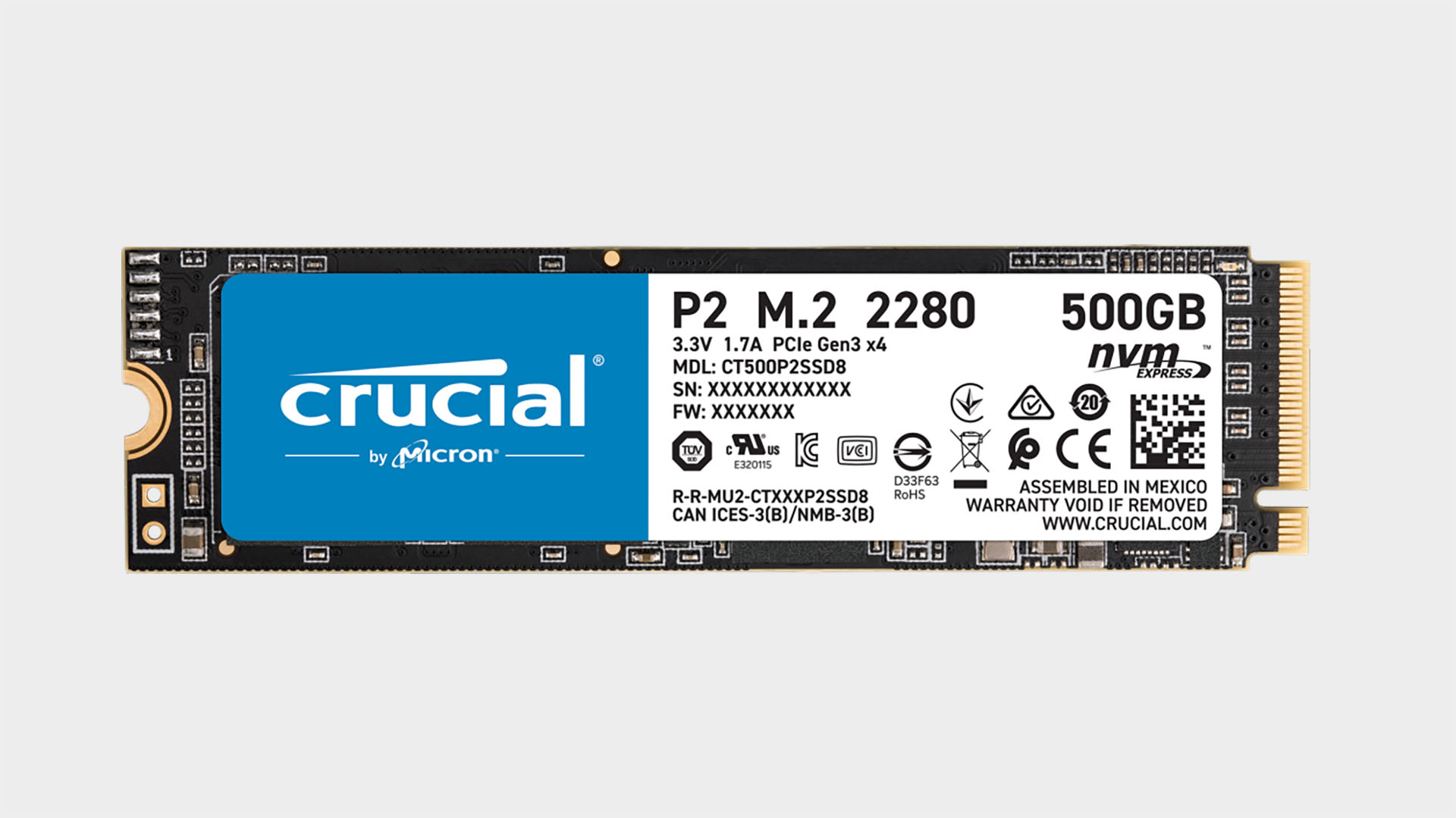Our Verdict
With no certainty of TLC NAND flash, and lacklustre performance, we recommend looking elsewhere for budget NVMe storage.
For
- Cheap SATA replacement
Against
- Performance could vary between drives
PC Gamer's got your back
The Crucial P2 500GB isn't quite the SSD we were expecting it to be. You'd think this budget drive would take after the P1, a quad-level cell (QLC) SSD released towards the tail-end of 2018. But no, the Crucial P2 500GB is a triple-level cell (TLC) drive—although not one without stipulations.
Capacity: 500GB
Controller: Phison PS5013-E13T
NAND: Crucial TLC/QLC
Interface: M.2 PCIe 3.0 x4
Rated seq. read: 2,300MB/s
Rated seq. write: 940MB/s
Warranty: 5-year
The benefits of TLC drives are two-fold. Firstly, they offer greater performance than their QLC counterparts, meaning you will generally find higher read/write speeds. Secondly, they are able to offer higher endurance ratings and longer warranties, which can keep your data stored safely for longer, and through a greater number of write cycles.
Those benefits are dependent on one key thing, however, and that's onboard DRAM. That's something the P2 lacks, and how Crucial has been able to offer this drive for the same per dollar you'd expect from a slower, less reliable QLC SSD.
DRAM-less SSDs have to rely on NAND flash to locate the information requested by the host, or otherwise use NVMe protocols to take up a little space on the Host DRAM (HMB). Pair that with slow NAND, which is heavily reliant on a variable SLC cache to keep write speeds up to spec, and performance can become quite erratic dependent on the workload, data type, and size.
Peel back the thin sticker on the P2 and you'll find four TLC 3D NAND flash chips at 1Tb each for a total capacity of 500GB. Those are paired up with a third-party Phison PS5013-E13T controller, sans DRAM, which is capable of delivering PCIe Gen3 x4 speeds. Those are capped out at 2,300MB/s sequential read and 940MB/s sequential write on the P2.
Surprisingly, the write speed quoted by Crucial is significantly lower than what I experienced during testing. In AS SSD, I jotted down a sequential write speed of 1,670MB/s, and that feels like a rather significant underselling of the P2's potential by Crucial itself.
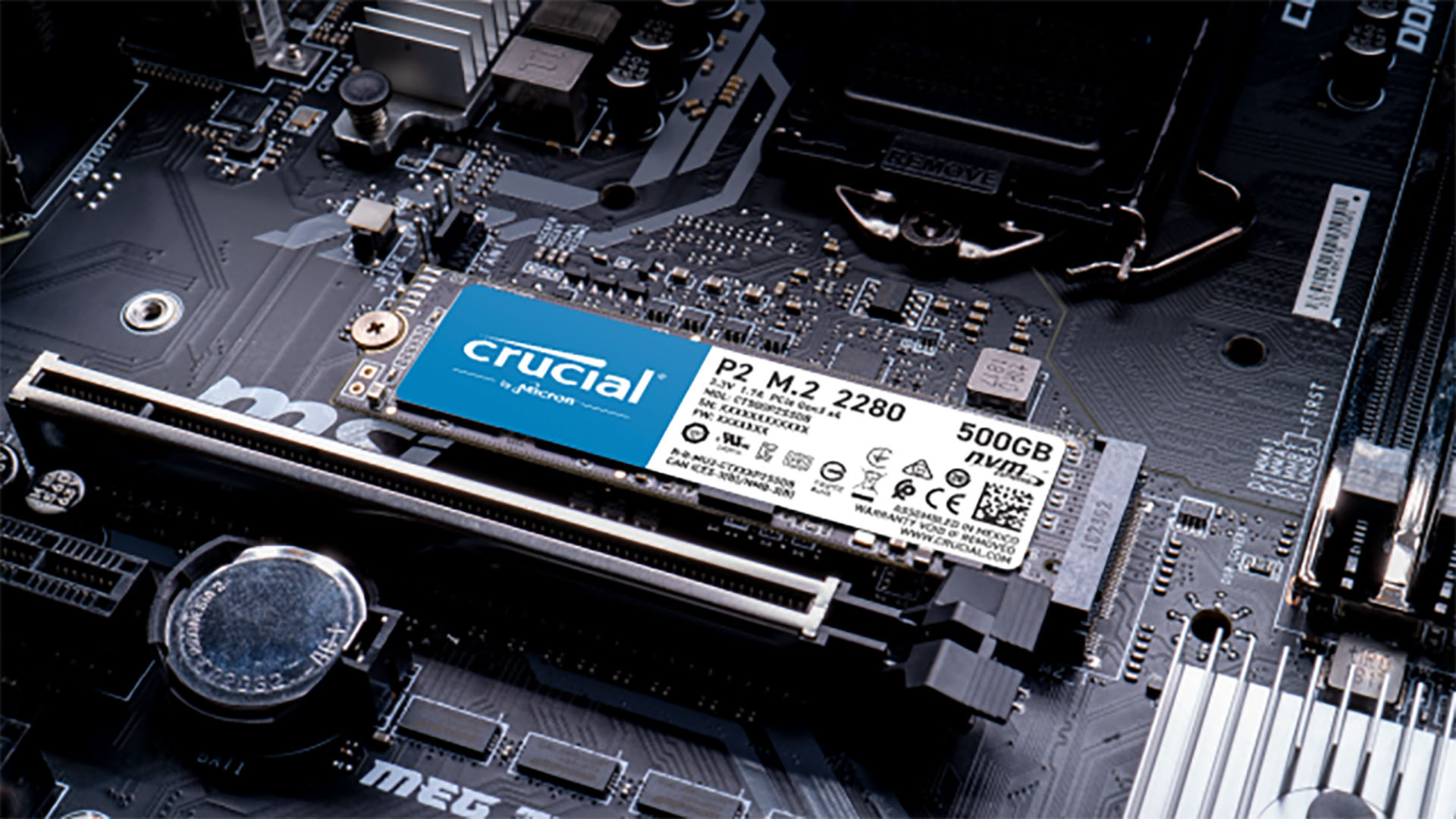
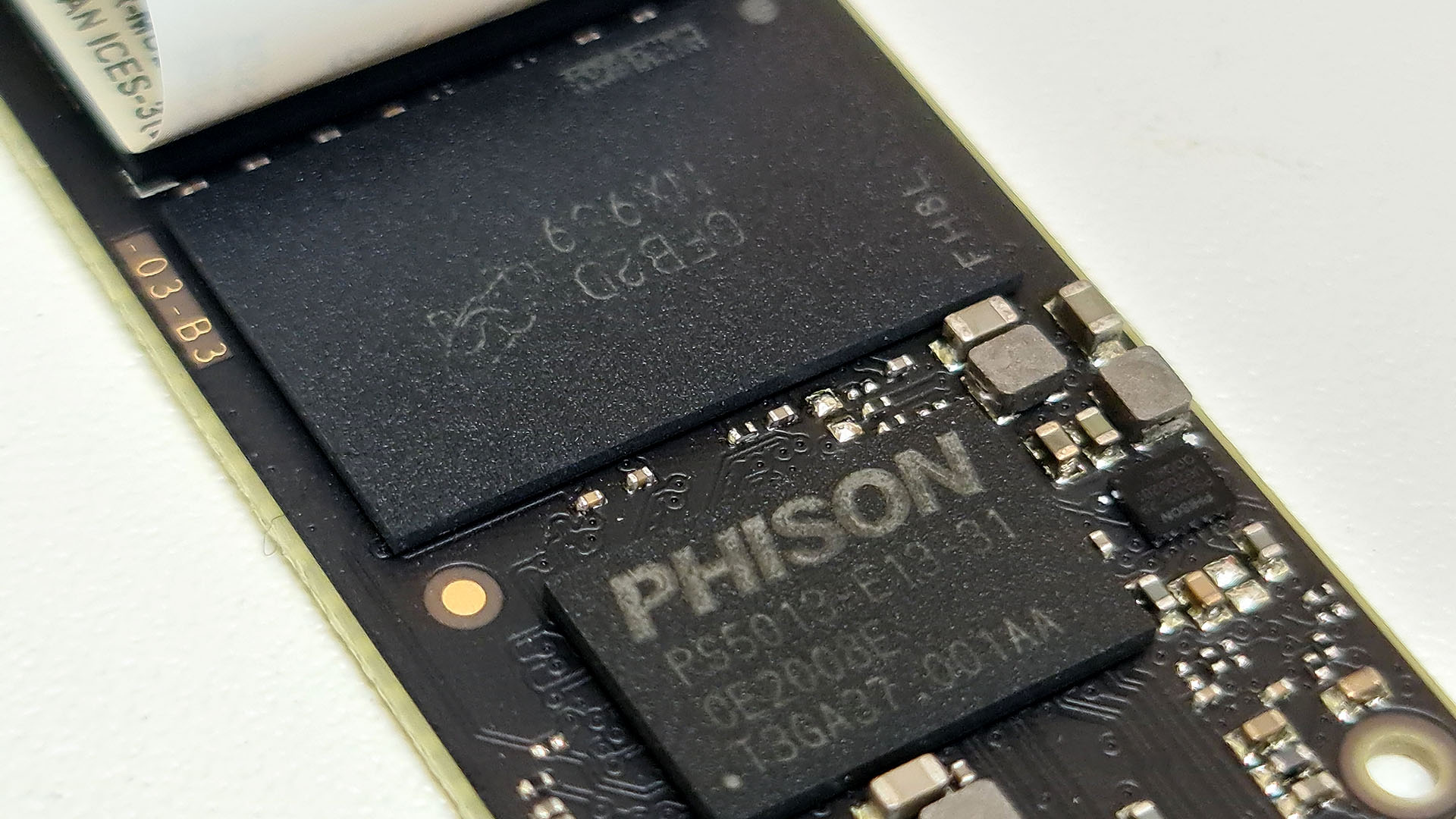
There may be an explanation for this, however. Crucial tells me that it wishes to retain the ability to step the P2 down to QLC NAND flash, potentially offering a split manufacturing run of both TLC and QLC flash. That would help explain why Crucial's write speeds are much lower than those we're experiencing: they're set to near-enough match those of the QLC P1 500GB.
Keep up to date with the most important stories and the best deals, as picked by the PC Gamer team.
"You may notice an endurance variance between your results and our published specs, as our specs are set to allow for potential product transitions in the future," a Crucial statement says. "The Crucial P2 SSD currently relies on Micron TLC 3D NAND technology, but over time may include a mix of Micron’s TLC and QLC NAND technologies. By mixing types of NAND with different capacities, we’re able to make product adjustments and decisions based on emerging and changing technology, preferred capacities, and flexibility to match movement of the overall market."
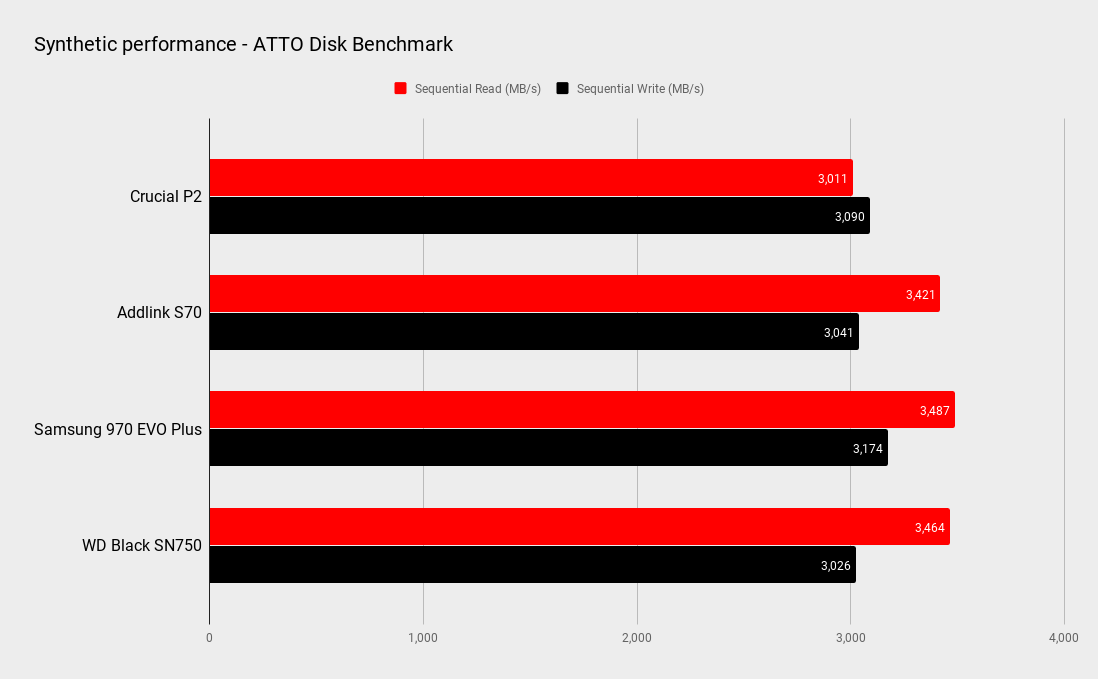
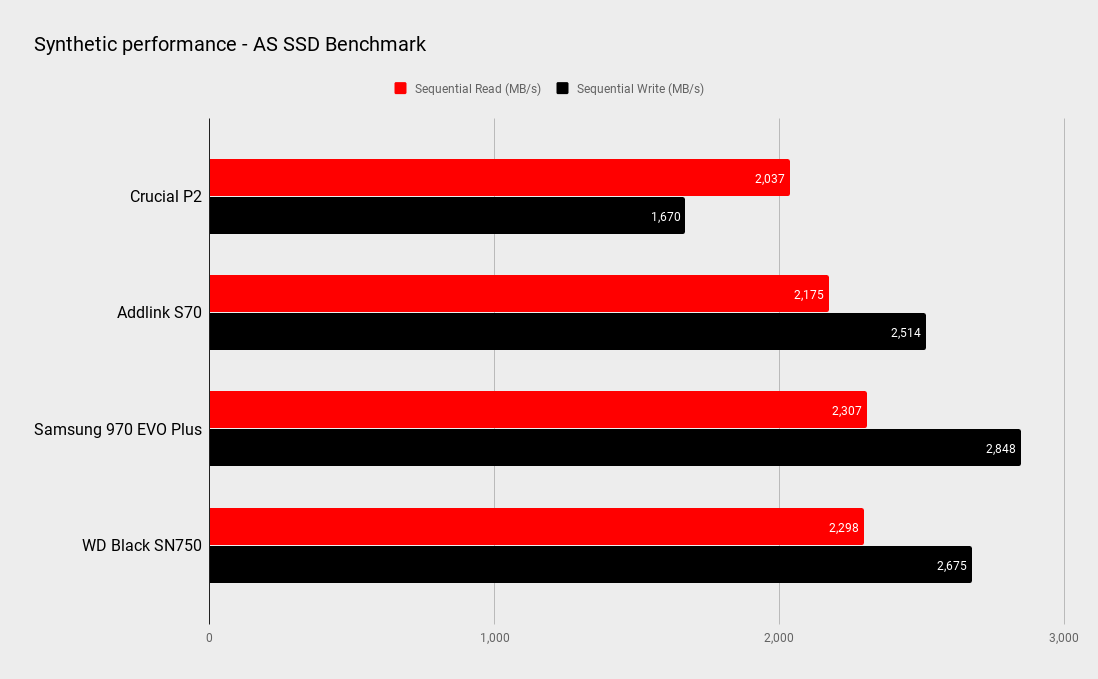
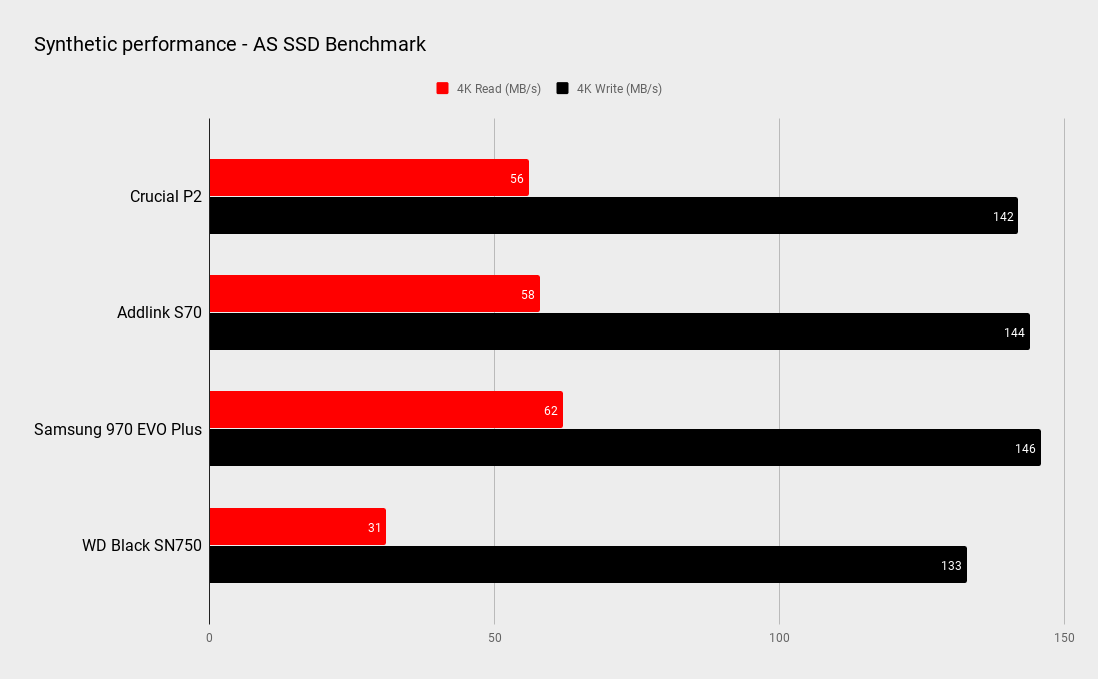
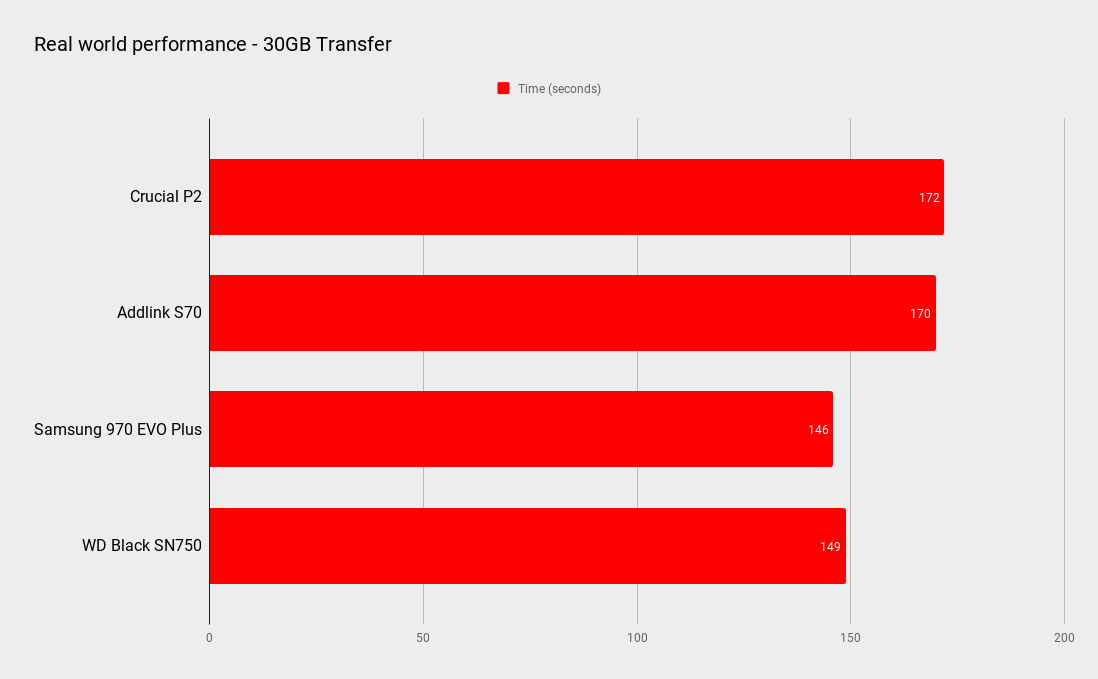
So now that we've located the missing pieces of the P2 puzzle, let's get to the figures.
When it comes to the best case scenario of ATTO testing, the P2 scores far greater than expected at a little over 3,011MB/s read and 3,090MB/s write. Those lofty scores are, however, not carried over when faced with the incompressible data of AS SSD, during which the drive spits out just 2,037MB/s and 1,670MB/s write. The P2 stands its own ground in random 4K testing, too, managing 56MB/s read and 142MB/s write.
It's when PCMark10's storage benchmark is introduced that the P2 struggles to maintain performance. Perhaps it's the 204GB of data required by the test in order to run, which is divided between a variety of tasks that mimic those in the real-world, but the P2 struggles to keep up with the bar set during the aforementioned synthetic tests. In the quick (23GB) storage test, the P2 manages an Index score of 1,475, some distance from other TLC SSDs we've tested. While in the full (204GB) test, it falls even shorter with an Index score of 967. Bandwidth dries up to less than half of others we've tested to 157.11MB/s, and average access time also doubles to 176µs.
It would appear to be a mixed bag of performance from the Crucial P2, and we expected no less from a DRAM-less drive. I don't, however, foresee the potential QLC variant fairing quite so well across the board, which makes this SSD particularly difficult to recommend without access to peel off the sticker and take a look under the hood for which of the two NAND flash is fitted.
For that reason, and the 150TBW endurance rating, I would recommend looking elsewhere for a budget 500GB drive, especially if you plan on using it for your OS. The Crucial P2 is snappier than a HDD, and awfully cheap too at $65 (£62), but it doesn't take much more cash to net one of the best SSDs for gaming with a few less asterisks regarding performance.
With no certainty of TLC NAND flash, and lacklustre performance, we recommend looking elsewhere for budget NVMe storage.

Jacob earned his first byline writing for his own tech blog, before graduating into breaking things professionally at PCGamesN. Now he's managing editor of the hardware team at PC Gamer, and you'll usually find him testing the latest components or building a gaming PC.
